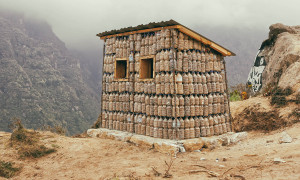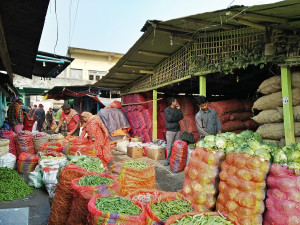Money
Handmade paper factories return after 10-year break
Factories producing handmade paper are making a comeback after being forced to remain out of the picture for more than a decade due to high production costs, shortage of raw materials, lack of manpower and the Maoist insurgency..jpg&w=900&height=601)
Basant Pratap Singh
Factories producing handmade paper are making a comeback after being forced to remain out of the picture for more than a decade due to high production costs, shortage of raw materials, lack of manpower and the Maoist insurgency.
Around 15 factories in the district that shut down during the insurgency period (1996-2006) have re-registered with the authorities to resume production.
Nepali handmade paper popularly known as ‘lokta’ is made from the lokta plant that grows at altitudes of 6,500 to 10,000 feet. The bush grows quickly and needs to be pruned to the ground every three-four years to make it stronger.
Generally, the paper is used for official and ceremonial purposes, and it has been identified among the 19 major exportable goods of the country. Handmade paper produced in Bajhang is exported to countries like Japan, Korea and Germany.
“Nepali paper factories in the district were hit hard by the decade-long insurgency. Besides, lack of raw materials was another reason which forced them to stop production,” said Hari Bhagat Shrestha, an official of the Cottage and Small Industry Development Committee. “However, these factories have resumed operation in the last three years.”
Six of the 15 factories in the district have already started production, while others are working to come back online, he said. The prolonged closure of the paper factories has also allowed the lokta plants to flourish, he added.
“The handmade paper market has a big potential to grow if the quality is assured,” said Surat Bahadur Singh, proprietor of Malika Handmade Paper. He added that in the past years, locals had shifted to collecting herbs and given up collecting lokta because there was more money in herbs.
After the district development committee banned the collection and supply of some herbs like Satuwa and Katuki, locals have gone back to harvesting lokta. The resumption of the handmade paper industry in the district has benefited locals.
Pyari Lal Jethara, owner of Kalika Handmade Paper, said that the resumption of production of handmade paper had increased economic opportunities for locals, particularly women. “A woman with a job in a factory normally earns Rs500-700 daily during the season by collecting lokta.”
The six factories that are currently operating produce handmade paper worth Rs10 million annually, said Shrestha.
The lokta plant is found in 56 districts of the country. There are many species of the lokta plant, but only five are suitable for making paper.
Although the plant has huge potential, no commercial farming is being done. The government permits harvesting of the plant from the forest for only three-four months of the year starting in mid-September.




 10.12°C Kathmandu
10.12°C Kathmandu














